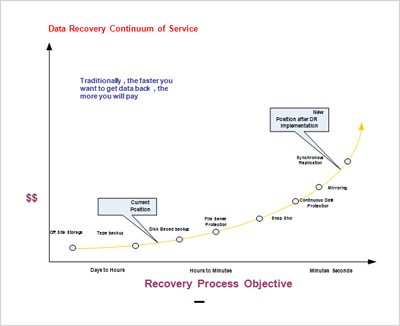


Saitech it solutions
A1,B&B Building
Power house road
palarivattom, Kochi - 682 025
Phn - 0484 3303775
Support - +91 8137090935, 8139897380
Email - prasad@saitech-it.com
A disaster recovery plan (DRP) - sometimes referred to as a business continuity plan (BCP) or business process contingency plan (BPCP) - describes how an organization is to deal with potential disasters. Just as a disaster is an event that makes the continuation of normal functions impossible, a disaster recovery plan consists of the precautions taken so that the effects of a disaster will be minimized and the organization will be able to either maintain or quickly resume mission-critical functions. Typically, disaster recovery planning involves an analysis of business processes and continuity needs. Disaster recovery services can help companies recover from virtually any type of disaster and ensure ongoing availability of mission-critical resources.
Need of a Disaster Recovery Plan
As IT is increasingly being applied to the core of business, availability of Business Application Service and IT infrastructure are critical for organizations to conduct its business functions, and DR and contingency planning process helps in ensuring high availability and reduces the risk of business interruption. The process itself can lead to significant improvements in business operations by identifying points of failure and making improvements in business process. Development of DR capabilities is the key project is to be undertaken by the infrastructure group, along with other initiatives suggested.
|
 |
The Recovery Time and Recovery Point Objective
The recovery time objective (RTO) is the maximum allowable downtime after an outage for recovering systems, applications, and functions. RTO provides the basis for developing cost-effective recovery strategies and for determining when and how to implement these recovery strategies during a disaster situation. The recovery point, for example, defines how current the data is after a disaster.
|
The recovery point objective (RPO) is the earlier point in time to which systems and data must be recovered after an outage. RPO defines the maximum amount of data that your organization is willing to sacrifice after a disaster; i.e. a zero RPO business continuance solution can survive a disaster without any loss of data. Together, RTO and RPO provide a measurable target for your business continuance and disaster recovery solution to achieve. Improving RTO and RPO requires increasing your investment in networking and storage technologies and processes. Also, the physical distance between your data centers and how well your applications tolerate network latency affects how close you can get to zero RPO. That is why you should limit your RTO and RPO to whatever levels your organization can effectively tolerate.
We propose business group develop a strategic initiative to design a disaster recovery and business contingency plan to ensure the business systems and infrastructure availability.
Disaster Recovery and Contingency Planning
We recommend following structured methodology based on federal guidelines to design, develop, deploy, test and maintain DR/Contingency Planning programs. We can assist organizations in development and integration of a series of procedures that direct the actions of personnel within a business unit, at the time of a business interruption, to minimize the impact of the business interruption and to achieve a timely continuation or resumption of business activities.
Over all the key elements of the process are as follows:
Get management buy-in, Obtain resources, Identify Essential functions, Conduct Risk Analysis, Conduct Impact Analysis, Develop Recovery Strategies, Develop the plan Education, Training and Awareness, Exercise the plan, Maintain the plan
We will help Organizations identify a location and set up DR capability so as to free up much needed space for other business units to operate from HQ. Identify facilities that are located in geographically separate regions that can be used to deliver and support IT services. Each location can serve as a backup facility for other facilities. We will propose a detailed DR response plan and implement the plan and the required infrastructure after we conduct a detailed assessment of the requirements and various options that are available to business.
|




